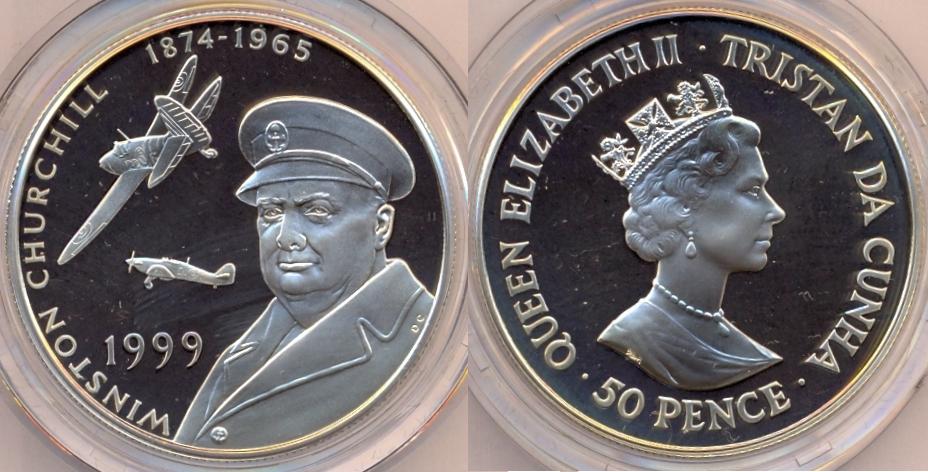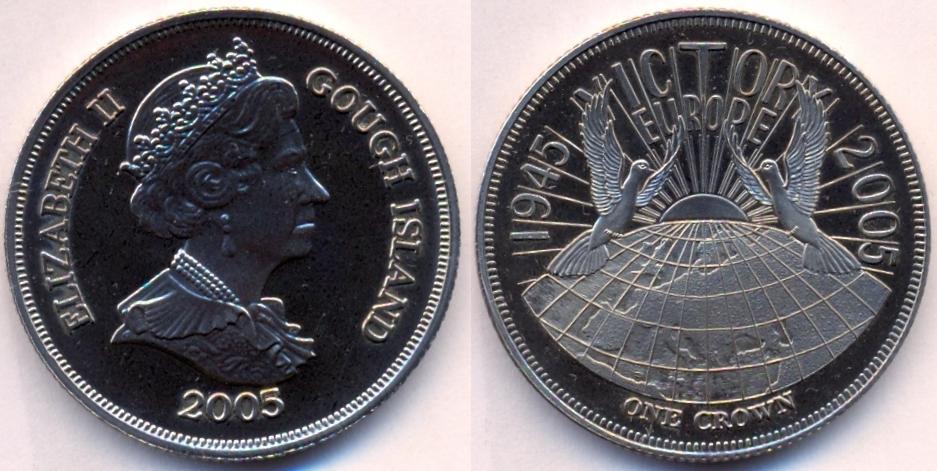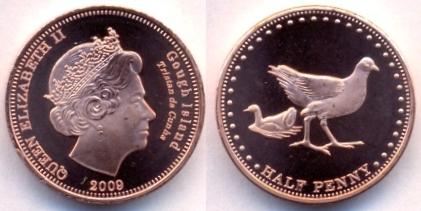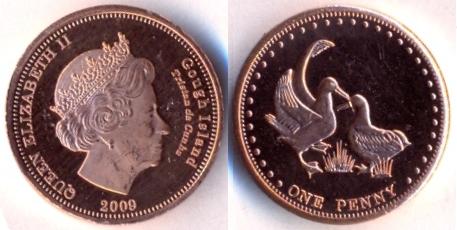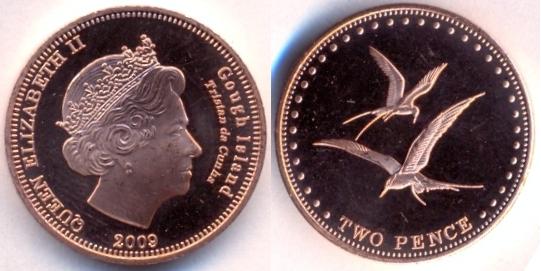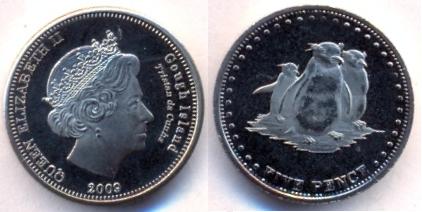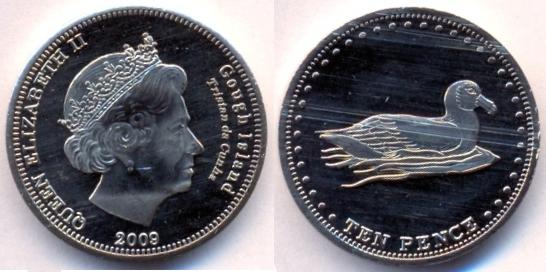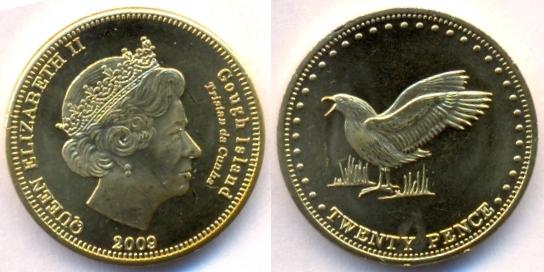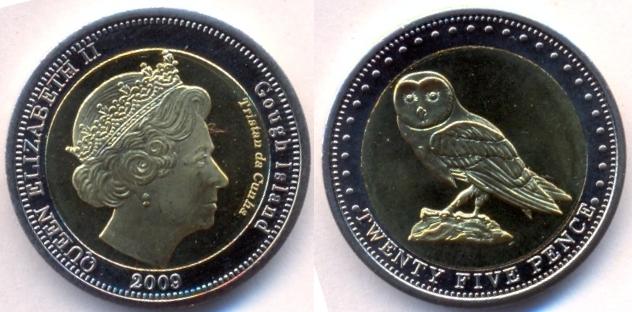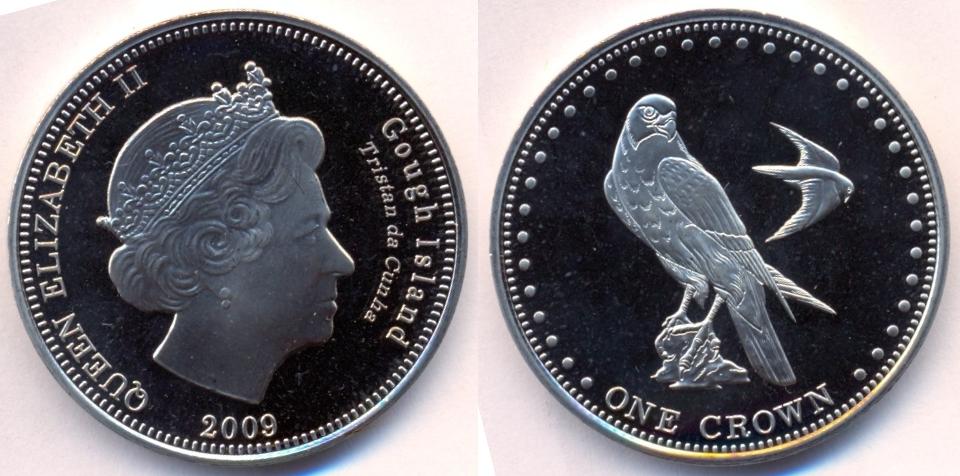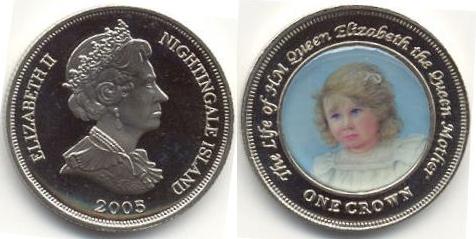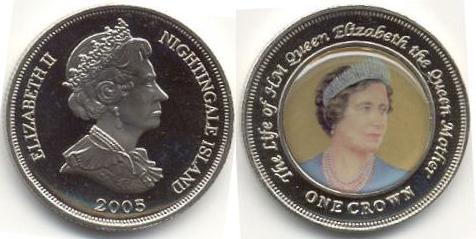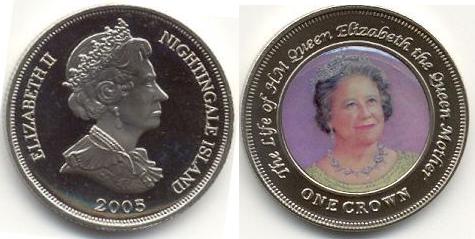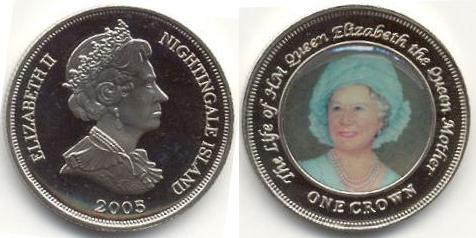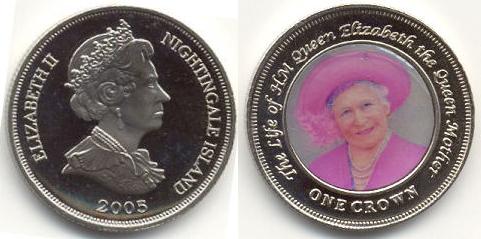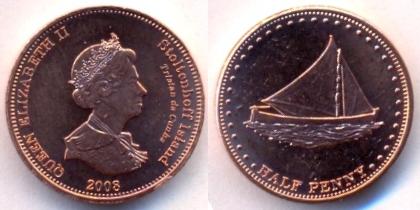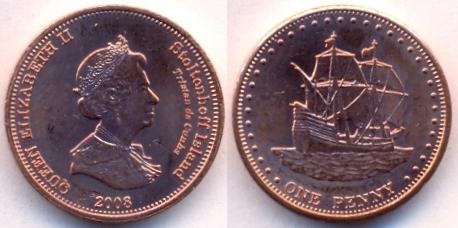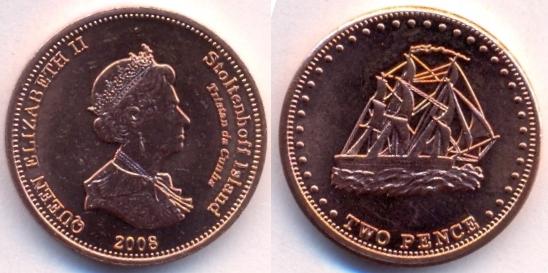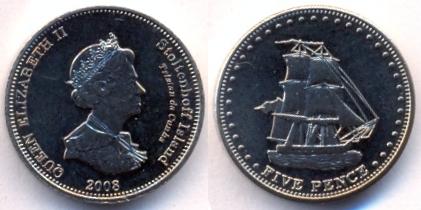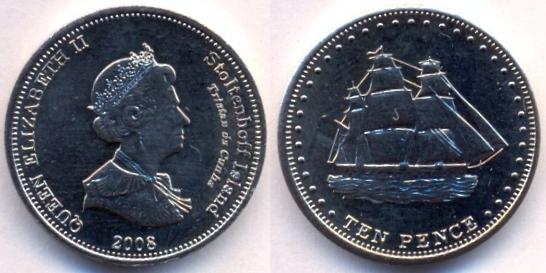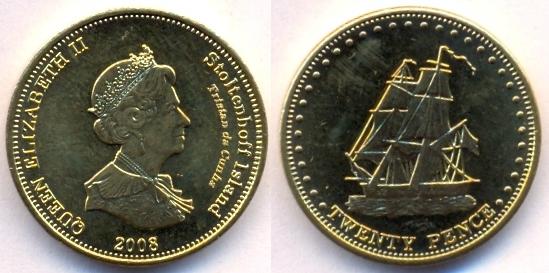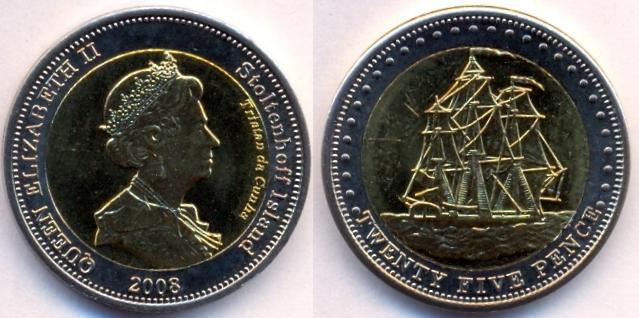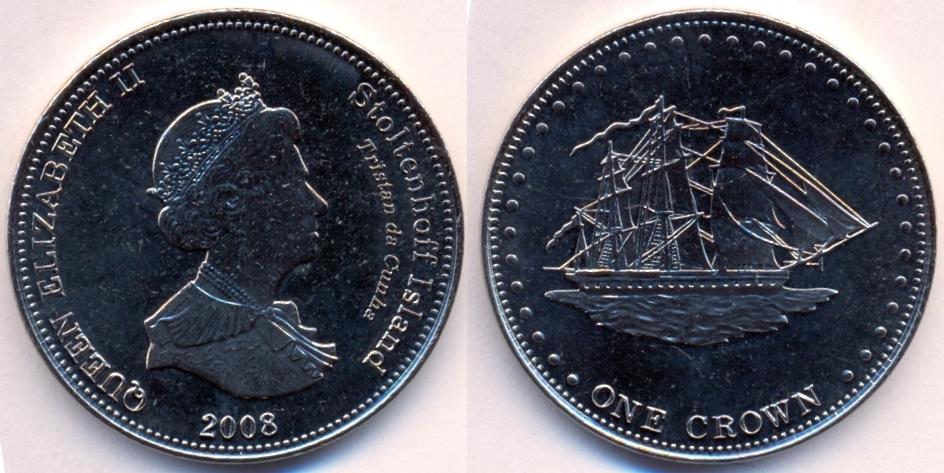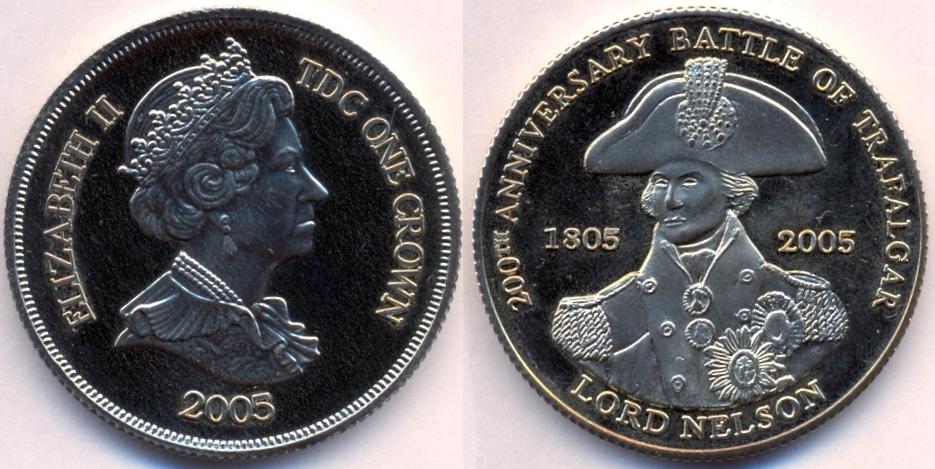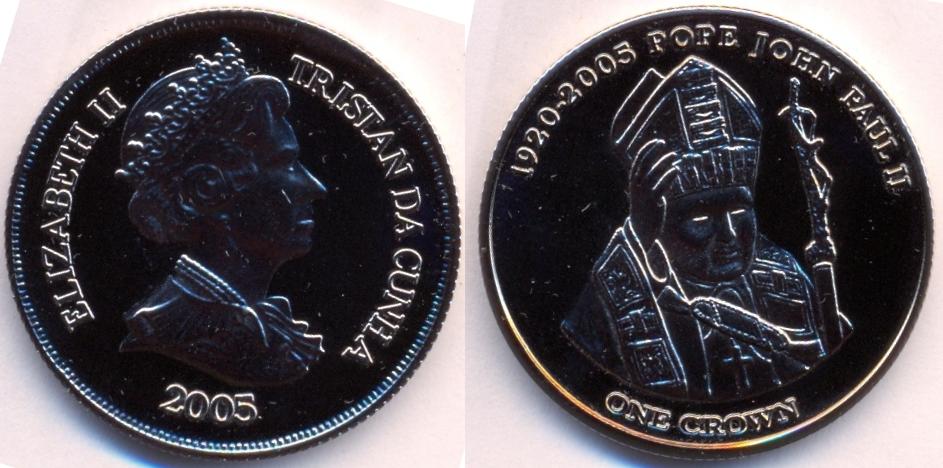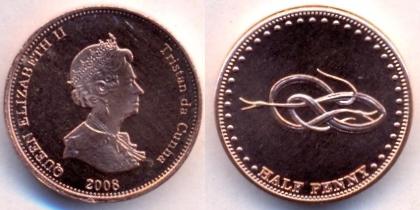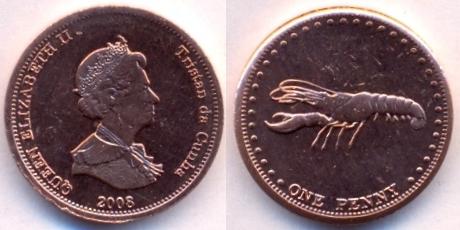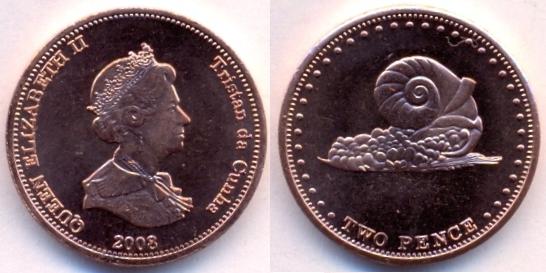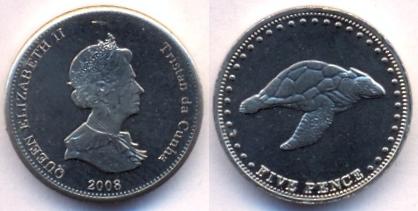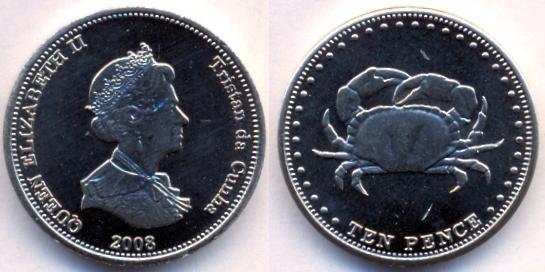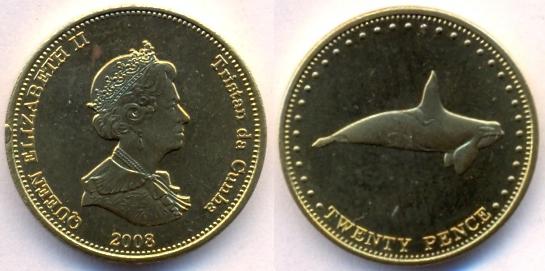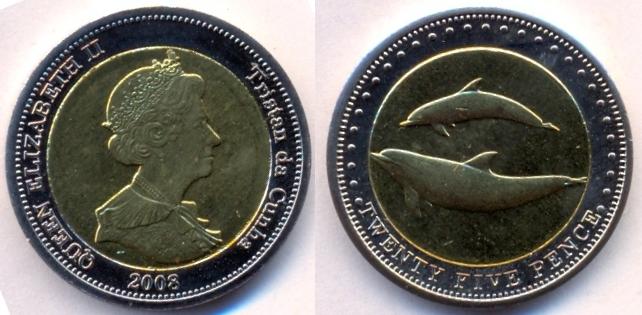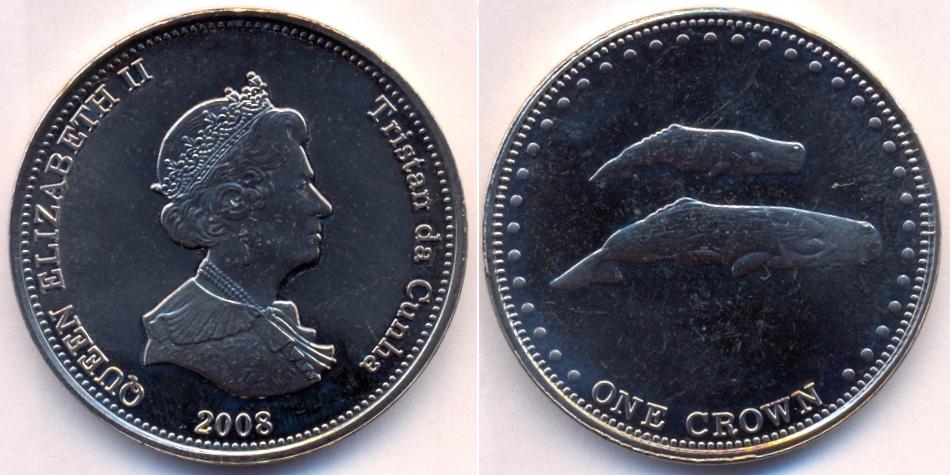 |
 |
| Tristan da Cunha | |||||||||||||||||||||
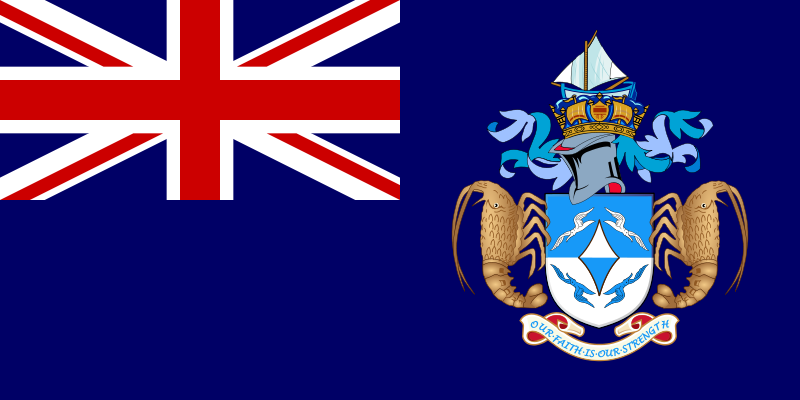 |
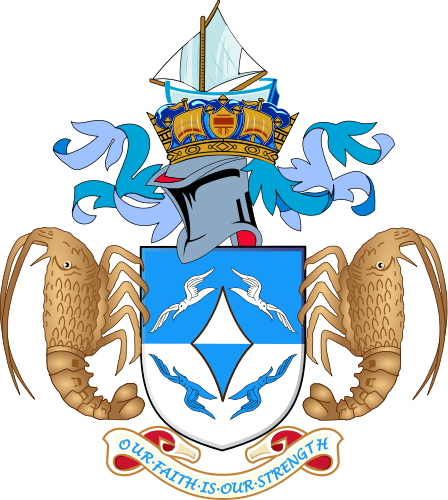 |
||||||||||||||||||||
|
May 1506 Discovered and claimed for Portugal by Admiral Tristão d'Acunha (Iha de Tristão d'Acunha). 27 Dec 1810 Island settled by a group of Americans (Isles of Refreshment). 14 Aug 1816 Britain takes possession (Tristan da Cunha). 18 Nov 1817 British garrison is withdrawn; three of its members stay, forming the nucleus of a small self-governing community. 12 Jan 1938 Island made a dependency of St. Helena. 09 Oct 1961 - 09 Apr 1963 Island is evacuated following volcanic eruption. |
|||||||||||||||||||||
Tristan da Cunha is a remote volcanic group of islands in the south Atlantic Ocean, and also the name of the main island of that group. It is the most remote inhabited archipelago in the world, lying 2,816 kilometres (1,750 mi) from the nearest land, South Africa, and 3,360 kilometres (2,090 mi) from South America. It is part of the British overseas territory of Saint Helena, Ascension and Tristan da Cunha, which also includes St Helena 2,430 kilometres (1,510 mi) to its north, and equatorial Ascension Island even farther removed, grouping the British South Atlantic islands into one far-flung centrally administered aggregate. Tristan da Cunha is said to be the "most remote inhabited location on Earth." It has a population of 275 (2009 figures). The territory consists of the main island of Tristan da Cunha itself, which measures about 7 miles across and has an area of 98 square kilometres (38 sq mi), along with the uninhabited Nightingale Islands and the wildlife reserves of Inaccessible Island and Gough Island. Tristan da Cunha islands were first sighted in 1506 by Portuguese explorer Tristão da Cunha, although rough seas prevented a landing. He named the main island after himself, Ilha de Tristão da Cunha, which was later anglicised to Tristan da Cunha Island. The first survey of the archipelago was made by the French frigate L'Heure du Berger in 1767. Soundings were taken and a rough survey of the coastline was made. The presence of water at the large waterfall of Big Watron and in a lake on the north coast were noted, and the results of the survey were published by a Royal Navy hydrographer in 1781. The first permanent settler was Jonathan Lambert, from Salem, Massachusetts, United States, who arrived at the islands in December 1810. He declared the islands his property and named them the Islands of Refreshment. Lambert's rule was short-lived, as he died in a boating accident in 1812. In 1816 the United Kingdom formally annexed the islands, ruling them from the Cape Colony in South Africa. This is reported to have primarily been a measure to ensure that the French would not be able to use the islands as a base for a rescue operation to free Napoleon Bonaparte from his prison on Saint Helena. The occupation also prevented the United States from using Tristan da Cunha as a base, as they had during the War of 1812. Attempts to colonise Inaccessible Island failed. The islands were occupied by a garrison of British Marines, and a civilian population was gradually built up. Whalers also set up on the islands as a base for operations in the Southern Atlantic. However, the opening of the Suez Canal in 1869, together with the gradual move from sailing ships to coal-fired steam ships, increased the isolation of the islands, as they were no longer needed as a stopping port for journeys from Europe to the Far East. In 1867, Prince Alfred, Duke of Edinburgh and second son of Queen Victoria, visited the islands. The main settlement and capital, Edinburgh of the Seven Seas [Fort Malcolm 1816-1867], was named in honour of his visit. Lewis Carroll's youngest brother, the Rev. Edwin H. Dodgson, served as an Anglican missionary and school teacher in Tristan da Cunha in the 1880s. The second Duke of Edinburgh, the husband of Queen Elizabeth II, visited the islands in 1957 as part of a world tour onboard the royal yacht Britannia. On 12 January 1938, by Letters Patent, the islands were declared a dependency of Saint Helena. Prior to this, passing ships stopped irregularly at the island for a period of mere hours. During World War II, the islands were used as a top secret Royal Navy weather and radio station codenamed HMS Atlantic Isle, to monitor U Boats (which needed to surface to maintain radio contact) and German shipping movements in the South Atlantic Ocean. The only currency in use on the island at this time was the potato, and islanders labouring to construct the station were paid in kind with naval supplies for their own use, such as wood, paint and tea. Money was introduced the following year, as was the island's first newspaper, The Tristan Times. The first Administrator was appointed by the British Government during this time. In 1958, as part of Operation Argus, the United States Navy exploded an atomic bomb 200 kilometres high in the upper atmosphere, 115 kilometres southeast of the main island. In 1961, a volcanic eruption forced the evacuation of the entire population to wooden huts in the disused Pendell Army Camp in Merstham, Surrey, England before moving to a more permanent site at a former Royal Air Force station in Calshot near Southampton, England, living mainly in a road called Tristan Close. In 1962, a Royal Society expedition went to the islands to assess the damage, and reported that the settlement Edinburgh of the Seven Seas had been only marginally affected. Most families returned in 1963 led by Willie Repetto (head of the ten-person island council) and Allan Crawford (the former island welfare officer). In 2005, the islands were given a United Kingdom post code (TDCU 1ZZ) to make it easier for the residents to order goods online. The St Helena, Ascension and Tristan da Cunha Constitution Order 2009 was made by HM the Queen and the Privy Council on 8 July and is expected to come into operation shortly thereafter. The new Constitution replaces the 1988 version and among other changes limits the Governor's powers, includes a Bill of Rights, establishes independence of the judiciary and the public service and formally designates the Governor of St Helena as, concurrently, the Governor for Ascension and Tristan da Cunha. It also ends the "dependency" status of Ascension and Tristan da Cunha on St Helena. |
|||||||||||||||||||||
|
|
|||||||||||||||||||||
| Important events on parts of other Islands: | |||||||||||||||||||||
|
Gough Island |
|||||||||||||||||||||
| Gough Island is also known historically as Gonçalo Álvares (after the Portuguese explorer) or mistakenly as Diego Alvarez, is a volcanic island in the South Atlantic Ocean. In Spanish it was called Isla de Gonzalo Álvarez. It was named Gough Island after Captain Charles Gough of the Richmond who sighted the island in 1732. Confusion of the unusual Portuguese saint name Gonçalo with Spanish Diego led to the misnomer "Diego Alvarez island" in English sources from 1800s to 1930s. It is a dependency of Tristan da Cunha and part of the British overseas territory of Saint Helena, Ascension and Tristan da Cunha. It is uninhabited except for the personnel of a weather station (usually six people) which the South African National Antarctic Programme has maintained continually on the island since 1956. It is one of the most remote places with a constant human presence. Gough Island is roughly rectangular with a length of 13 km (8.1 mi) and a width of 7 kilometres (4.3 mi). It has an area of 91 km2 (35 sq mi) and rises to heights of over 900 m (3,000 ft) above sea level. Topographic features include the highest Peak, Edinburgh Peak, Hags Tooth, Mount Rowett, Sea Elephant Bay, Quest Bay, and Hawkins Bay. It includes small satellite islands and rocks such as Southwest Island, Saddle Island (South), Tristiana Rock, Isolda Rock (West), Round Island, Cone Island, Lot's Wife, Church Rock (North), Penguin Island (Northeast), and The Admirals (East). It is a remote, rugged and lonely place, about 400 km (250 mi) south-east of the other islands in the Tristan da Cunha group, 2,700 km (1,700 mi) from Cape Town, and over 3,200 km (2,000 mi) from the nearest point of South America. | |||||||||||||||||||||
|
May 1506 Discovered by Portuguese Capt. Gonçalo Alvarez, named Gonçalo Alvarez. 03 Mar 1732 Re-discovered by British Capt. Charles Gough of the Richmond and named Gough Island. 14 Aug 1816 Britain takes possession along with Tristan da Cunha. 28 Mar 1938 Formally annexed by U.K., made a dependency of St. Helena. 02 Apr 1976 Gough made a wildlife reserve. 05 Jan 1996 Designated World Heritage site by UNESCO. |
|||||||||||||||||||||
|
Inaccessible Island |
|||||||||||||||||||||
| Inaccessible Island is an extinct volcano (last active six million years ago) with Cairn Peak reaching 449 m. The island is 14 km2 (5.4 sq mi) in area, rising out of the South Atlantic Ocean 45 km (28 mi) south-west of Tristan da Cunha. Inaccessible Island was first discovered in January 1656 during a voyage by 't Nachtglas, a Dutch ship under the command of Jan Jacobszoon, 146 years after Tristan da Cunha was first sighted by Portuguese sailors. Jacobszoon originally named it 'Nachtglas' island. There are two explanations for the name 'Inaccessible' island. One is that on maps the newly found island was referred to as "inaccessible" because the Dutch crew who landed were not able to get further inland than the beach, as they were blocked by 1000-foot high cliffs. The other claims that French captain d'Etchevery renamed the island in 1778 after not being able to land. In 1803, US sealers led by Amasa Delano made landfall on the island. The Stoltenhoff brothers, who arrived on Inaccessible from Germany in 1871, lived there for several years intending to make a living sealing and selling their wares to passing traders (forgetting how infrequently Inaccessible had visitors). However, due to the scarcity of food, they were "overjoyed" to be rescued in 1873 during HMS Challenger's visit to examine the flora and fauna there. The South African author Eric Rosenthal chronicled the Stoltenhoffs' adventure in 1952. The nearby Stoltenhoff Island is named after the brothers. At least three confirmed shipwrecks have occurred off the coast of Inaccessible Island. The first, and most dramatic, was that of the Blenden Hall, a British ship chartered to the East India Company, which set sail in 1821 with 84 passengers and crew aboard. The other two shipwrecks are the wreck of the Shakespeare at Pig Beach in 1883 and the Helen S Lea at North Point in 1897. | |||||||||||||||||||||
| May
1506 Discovered by Portuguese Admiral Tristão d'Acunha. 04 Jan 1666 Named Het Nachtglas Eyland by the Dutch aboard t'Nachtglas. 1778 Renamed Ile Inaccessible by French Capt. d'Etchevery. 27 Dec 1810 - 17 May 1812 Claimed by Jonathan Lambert as Printard Island. 14 Aug 1816 Britain takes possession along with Tristan da Cunha. 1871 - 1873 Inhabited by the Stoltenhoff brothers from Germany. 01 Jan 1938 Made a dependency of St. Helena. |
|||||||||||||||||||||
|
Nightingale Island |
|||||||||||||||||||||
| Nightingale Island is an active volcanic island in the South Atlantic Ocean, 3 km² in area, part of the Tristan da Cunha group of islands. They are administered by the United Kingdom as part of the overseas territory of Saint Helena, Ascension and Tristan da Cunha. Nightingale Island is part of the Nightingale Islands, which also includes islets Middle Island (46 m) and Stoltenhoff Island (99 m). All three are uninhabited, but are regularly visited for scientific purposes and research. Nightingale has two peaks on its north end. One is 337 metres (1,106 ft) high while the other is 293 metres (961 ft) high. The rest of the island is ringed by cliffs. However, these cliffs are not nearly as high as those surrounding Nightingale's neighbour Inaccessible Island, which is approximately 16 km away and has cliffs approximately 300m high. Thus human access is much easier on Nightingale than on Inaccessible. The island is a volcano, composed of early and late stage ash deposits. Massive Trachytic lava flows have been extruded in the past. Prior to 2004, the last eruption may have been over 39,000 years ago. Large amounts of kelp surround the island, which makes it harder to anchor ships in bad weather. | |||||||||||||||||||||
|
11 Jan 1656 Discovered by the Dutch and named Gerbroken Eyland.
1760 Renamed Nightingale Island by British Capt. Gamaliel Nightingale. 27 Dec 1810 - 17 May 1812 Claimed by Jonathan Lambert as Lovel Island. 14 Aug 1816 Britain takes possession along with Tristan da Cunha. 01 Jan 1938 Made a dependency of St. Helena. |
|||||||||||||||||||||
| Currency: British Pound are used on this Island, while South African Rand, US Dollar and Euro are readily accepted. Tristan da Cunha has since 1977 (Queen Elizabeth II silver jubilee), produced commemorative coins from time to time. | |||||||||||||||||||||
|
|||||||||||||||||||||
| Churchill Commemorative Coins from Tristan da Cunha: Soldier, writer, painter and stateman - considered by many to be person of the 20th century. Winston Churchill was born in 1874 and became a major personality who was rarely away from the centre stage. This coin mark the 125th Anniversary of his birth. Remembered by many as the Wartime Prime Minister, and an inspiration during Europe's darkest hours, these commemorative coins, designed by David Cornell, pay tribute to a remarkable man. The obverse portrait captures the "bull dog" determination and shows Churchill in one of his favourite uniforms - that of the Royal Yacht Squadron. He had very strong links with the sea and particularly the Navy as he served as First Lord of the Admiralty on two occasions, (1911-1915, and on the outbreak of the Second World War in 1939). After the First World War, Churchill was appointed Secretary of State for War, and also for Air, and played a major part in the modernisation of the Navy and the development of air power. Fittingly the design also includes, in the background , the Spitfire and Hurricane - two of the famous fighter planes of WWII. The reverse of the issue features the Raphael Maklouf portrait of H.M. The Queen together with the country name and the denomination. | |||||||||||||||||||||
|
Tristan da Cunha (including Gough Island, Nightingale Island and Stoltenhoff Island) coins produced by Commonwealth Mint. |
|||||||||||||||||||||
| Tristan da Cunha Commemorative Coins
was initiated by administrator Mike Hentley through the
Commonwealth Mint &
Philatelic Bureau Ltd. According to Tristan
da Cunha's website at http://www.tristandc.com/:- A change for the better happened in November 2004 when, with the approval of the Governor and the Secretary of State, the Tristan Government entered into a five year agreement with the Commonwealth Mint & Philatelic Bureau Ltd (formerly known as London Mint Ltd). This innovative partnership enables Tristan to select and approve designs for proposed issues, with the company arranging production and distribution to collectors via established dealerships worldwide. Production costs are met by the income from sales and, in addition, the Government receives a royalty on each coin sold. This provides a welcome revenue stream in addition to traditional income from the fisheries sector, a modest amount of tourism, and sales of stamps and souvenirs; and helps to finance the provision of essential government services such as Camogli Hospital and St Mary's School. Details of their Post office, Stamps, Published Books, Coins, Products current for sale and Jobs can be viewed at http://www.tristandc.com/islandstore.php. The Commonwealth Mint has been producing coins of Tristan da Cunha and on related islands in the group since January 2005. |
|||||||||||||||||||||
| Gough Island | |||||||||||||||||||||
| Gough Island is major bird sanctuary in the Tristan da Cuhna group. Gough Island recently issued a set of eight legal tender, each featuring a different bird. I sincerely doubt the coins circulate as the small island is only inhabited by about six people who man a weather station, along with thousands of birds. | |||||||||||||||||||||
|
|||||||||||||||||||||
| Nightingale Island | |||||||||||||||||||||
| A set of five design of one crown coins were made in 2005 to commemorative the life of Queen Elizabeth Bowes-Lyon, the Queen Elizabeth II's mother with coloured pictures. Elizabeth Bowes-Lyon was the fourth daughter and the ninth of ten children of Claude George Bowes-Lyon, Lord Glamis, (later 14th Earl of Strathmore and Kinghorne), and his wife, Nina Cecilia Cavendish-Bentinck. Elizabeth was the last Queen of Ireland and Empress of India. As Queen Consort, Elizabeth was famous for her role in providing moral support to the British public during World War II, so much so that Adolf Hitler described her as "the most dangerous woman in Europe." | |||||||||||||||||||||
|
|||||||||||||||||||||
| Stoltenhoff Island (part of Nightingale Island group) | |||||||||||||||||||||
|
|||||||||||||||||||||
| Tristan da Cunha | |||||||||||||||||||||
| Tristan da Cunha is a small, wet and windy island in the mid-Atlantic. In 2008 Tristan da Cunha issued its first coin set. | |||||||||||||||||||||
|
|||||||||||||||||||||
| Countries / Territories | |||||||||||||||||||||
| Chiefa Coins | |||||||||||||||||||||
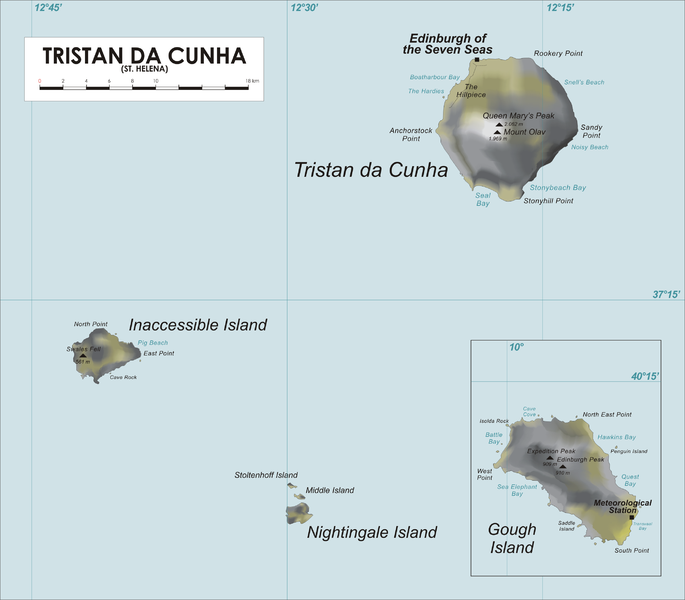
.jpg)
